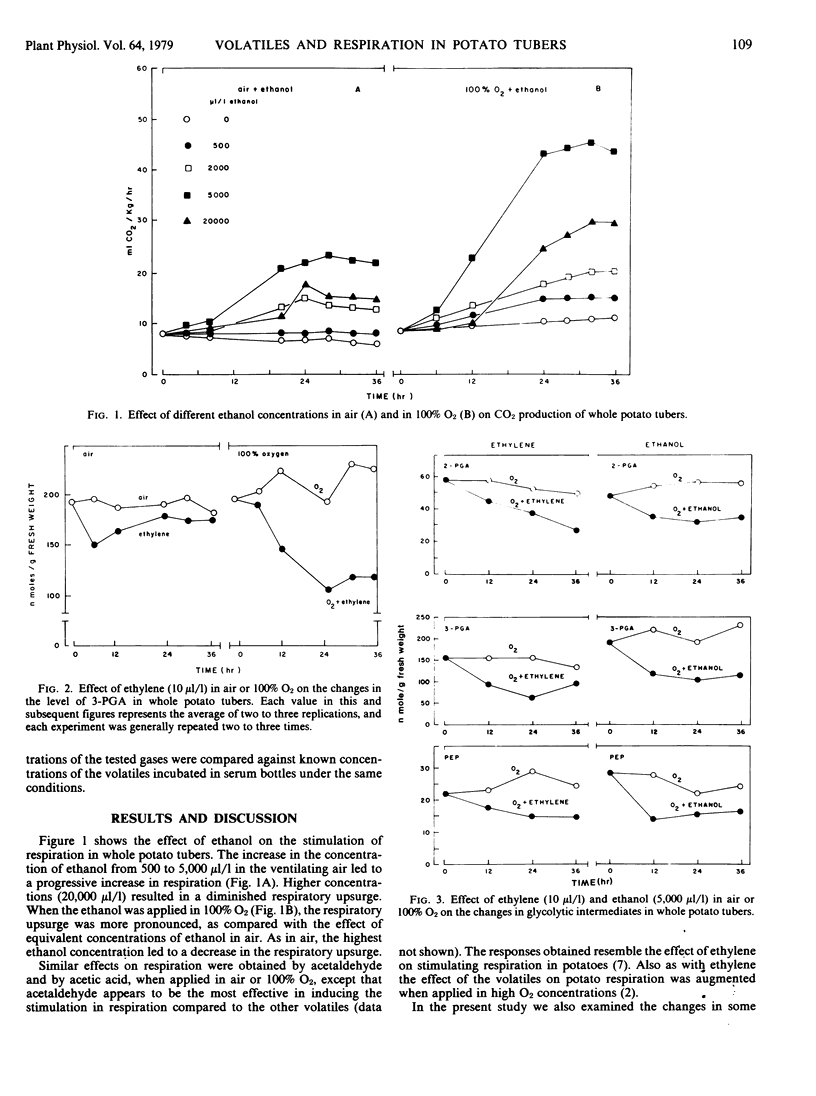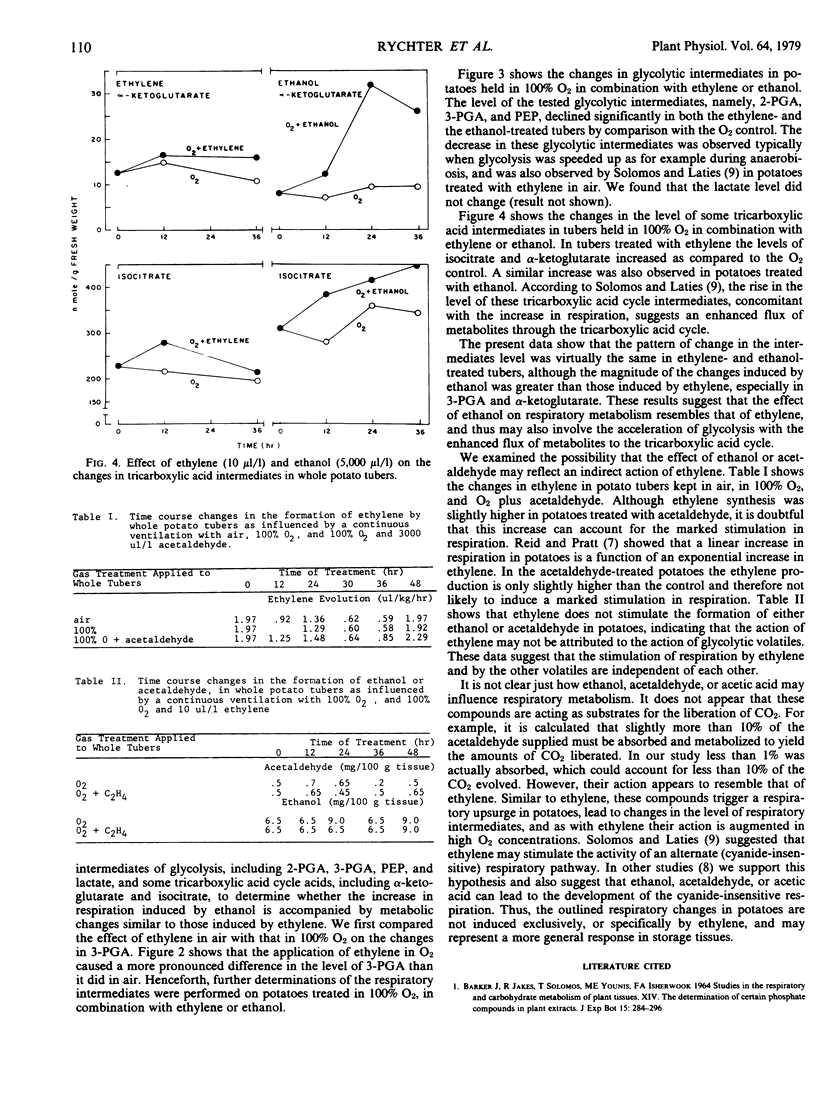Abstract
Ethanol, acetaldehyde, and acetic acid, when applied in a volatile state in air to potato tubers, led to a climacteric-like upsurge in respiration. The respiratory upsurge was markedly enhanced when the volatiles were applied in 100% O2.
Ethanol induced a decline in the level of 2-phosphoglyceric acid and phosphoenolpyruvate while leading to the accumulation of tricarboxylic acid cycle intermediates including isocitrate and α-ketoglutarate. The action of these compounds was similar to, but independent of, the action of ethylene.
Full text
PDF



Selected References
These references are in PubMed. This may not be the complete list of references from this article.
- Chin C. K., Frenkel C. Upsurge in respiration and peroxide formation in potato tubers as influenced by ethylene, propylene, and cyanide. Plant Physiol. 1977 Mar;59(3):515–518. doi: 10.1104/pp.59.3.515. [DOI] [PMC free article] [PubMed] [Google Scholar]
- Reid M. S., Pratt H. K. Effects of ethylene on potato tuber respiration. Plant Physiol. 1972 Feb;49(2):252–255. doi: 10.1104/pp.49.2.252. [DOI] [PMC free article] [PubMed] [Google Scholar]
- Rychter A., Janes H. W., Frenkel C. Cyanide-resistant Respiration in Freshly Cut Potato Slices. Plant Physiol. 1978 Apr;61(4):667–668. doi: 10.1104/pp.61.4.667. [DOI] [PMC free article] [PubMed] [Google Scholar]
- Solomos T., Laties G. G. The mechanism of ethylene and cyanide action in triggering the rise in respiration in potato tubers. Plant Physiol. 1975 Jan;55(1):73–78. doi: 10.1104/pp.55.1.73. [DOI] [PMC free article] [PubMed] [Google Scholar]


